
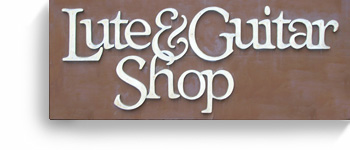

| Ben Bechtel 1936 – 2008 |
 |
||
  |
|
 The Lute & Guitar Shop—The early years. Ben Bechtel joined Larry Brown and Dave Schneider in the Lute & Guitar Shop in 1987 on Brotherton Road in Oakley, a suburb of Cincinnati. (Larry had started the shop in 1977 on Madison Road in O'Bryonville and built instruments there for five years, before he outgrew the space.) The three luthiers shared the space, the rent, and instrument-making knowledge. Shown in the photo are Larry in the foreground, Dave with a lute body, and Ben working on a harp. |
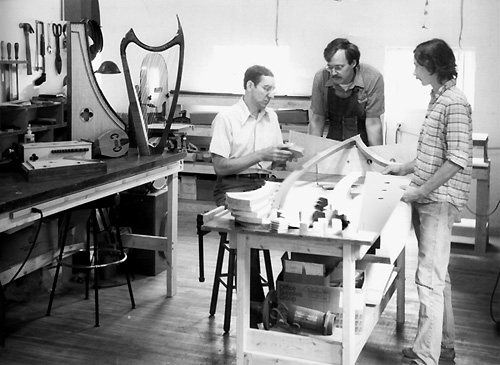 When faced with a problem in construction we would often bounce ideas off of each other in brainstorming sessions. This created a very fertile environment for the development of ideas, since we could each bring our strengths to the table. We would ask questions like, "How did historical makers solve this problem?", "What is the simplest and most elegant way to solve this problem?", "What would produce the fullest, loudest, or sweetest tone?", "What would suppress rather than enhance these qualities?" and so on. Often, we found that there was really only one answer that would fit all of these requirements, and it often fit within historical parameters. In the absence of surviving historical instruments, we would rely on our combined intuition about instrument making to arrive at one or more successful methods of construction. In this amazing environment our artistry, craftsmanship, creativity, imagination, and inventiveness quickly developed and matured. |
  At left, Larry works on a lute while Ben looks on. During his Cincinnati years, Ben developed an early-music program at the College-Conservatory of Music at the University of Cincinnati. He had a DMA in music performance and brought his scholarship to the construction of historically informed instruments. At right is one of his more recent harpsichords. Ben was known for his engineering genius as well as his musicality. His instruments are sought after for their mechanical integrity as well as their beauty of tone and ease of playability. |
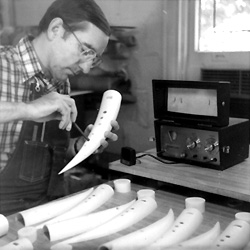  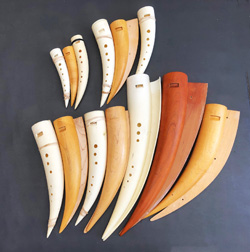  Ben designed and built a line of gemshorns, (soprano, alto, tenor, and bass) that were made from resin rather than cow's horn. The molds were all hand crafted from maple and cherry. The idea was that a resin instrument would overcome the tendency of natural horn to shrink and expand and become unplayable after a short time. They were each individually tuned to a Peterson strobe and finished with the sign of the Unicorn. These proved to be quite popular and are still in demand, although no longer made. They now fetch incredibly high prices on ebay. |
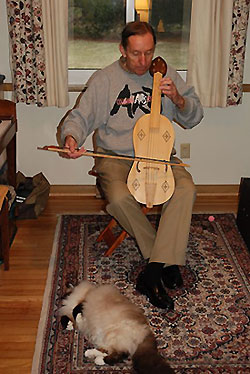 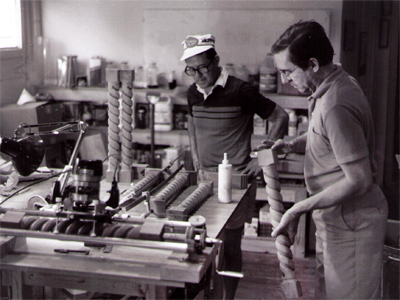 Ben also designed and built built a variety of early bowed stringed instruments, including the vielle shown here. He also made bows, copying historical bows found in museums. His cat, buddy, was relieved to learn that the "catgut" strings are not actually made from cats. But he was eventually most famous for his harpsichords. His innovations and improvements, while based closely on historical models, make his instruments more dependable and easier to maintain than most modern harpsichords. He built his own device for turning twisted harpsichord legs, using a router setup. His feats of engineering always amazed me! |
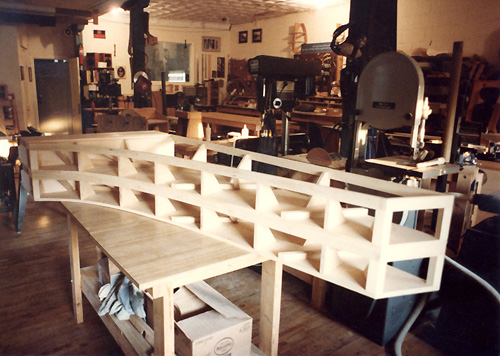
Ben spent hours researching the construction of early harpsichords in order to discover ways that early builders solved some acoustical or mechanical problem. He often discovered small, overlooked construction details in a museum instrument and experimented with those features to discover how they would effect the tone of an instrument. He also corresponded with modern harpsichord makers and shared opinions and ideas, but decided early on to take everything he heard or read from other makers with a grain of salt, knowing that many of the instrument-making ideas that have been passed down over the years are simply "urban legends" and not supported by either scientific or historical evidence. He questioned the notion that a harpsichord must necessarily be difficult to maintain or keep in tune, and he looked for ways to make the harpsichord more "user-friendly", especially in a University environment. As a result of his understanding of action and tuning problems, he was constantly in demand to refurbish or adjust troublesome instruments that had been acquired by various schools. |
Here is a listing of the instruments that Ben built. He brought his engineering genius to each of them with the result that they were low-maintenance, played well and sounded wonderful. And always with a nod to authenticity. He respected the building methods of the old luthiers and never did anything that would dramatically alter the sound or playability of the instruments. He took the techniques of old and mastered them. 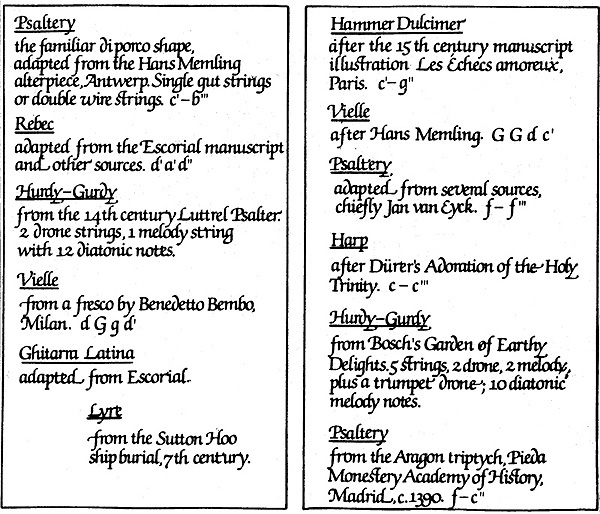 |
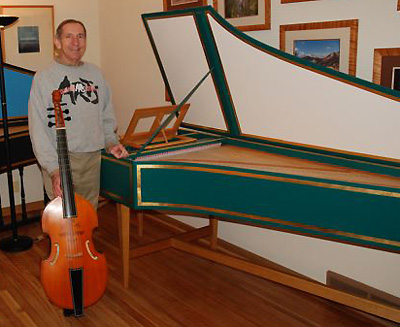 Ben moved to Columbus Ohio with his wife Judy in 1985. They performed with the a group called the Early Interval, which was associated with Conservatory of Music at Capital University, and Ben continued to build harpsichords. The photo at left was taken in February of 2008. The viola da gamba in the photo was built by Deitrich Kessler. As a performer, Ben could play a lot of different instruments, but his life-long favorite was the viola da gamba. The harpsichord is a French double-manual that he finished in 2007. He is survived by his wife Judy Smith, son Greg Bechtel of Cincinnati, daughter Kate Johnson of Colorado and four grandchildren. Ben was 72 years old. |
| Music Samples | Our Instruments | Instrument Making | Calendar | Contact Us | Links | Home | Sitemap |